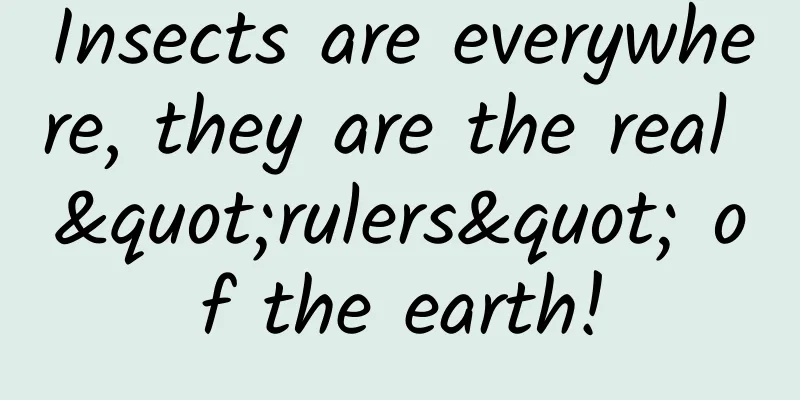[Creative Cultivation Program] Cows burp, climate warming, this is no joke
![[Creative Cultivation Program] Cows burp, climate warming, this is no joke](/upload/images/67f26306815b8.webp)
|
Author: Lao Ke’s Brain Studio Put a cow and a car together, do you know what the relationship is? If I tell you that they emit the same amount of greenhouse gases, would you believe it? A high-yielding cow can emit about 3 tons of greenhouse gases per year, which is equivalent to 3 tons of carbon dioxide. The greenhouse gas emissions in a year are equivalent to the emissions of one or two small cars (based on a displacement of 1.06 and a driving distance of 210,000 kilometers per year). Copyright image, no reproduction is authorized Are cows a significant source of greenhouse gases? As ruminants, cows have a special stomach structure. Our human stomach has only one stomach chamber, but cows have four. Each stomach is like a small anaerobic fermentation tank. When cows eat feed, they usually do not chew it thoroughly, and the feed goes directly into the stomach. Under anaerobic conditions, the feed is decomposed and fermented by bacteria to produce methane. After a period of time, the cows will return the undigested feed back to their mouths to chew again. When cows ruminate, in addition to the feed returning from the stomach to the mouth, some methane is also discharged through belching, which is what we often call burping. Greenhouse gases such as methane emitted by fermentation in the digestive tract of cows account for 46.5% of the total emissions of cows. Copyright image, no reproduction is authorized Secondly, the traditional feeding method has also increased the carbon emissions of dairy cows to a certain extent. In the traditional feeding method, various feed raw materials are added separately. Some feed resources with poor palatability, such as cake residues, brewer's grains, and tofu residues, are not fully utilized due to the picky eating of dairy cows, resulting in a large waste of feed resources. Picky eating can also lead to nutritional imbalance and reduced milk production in dairy cows, which will indirectly increase the carbon emissions of dairy cows. Copyright image, no reproduction is authorized In addition to fermentation and feeding, manure and sewage issues have always been a focus of attention in the dairy cattle breeding process. Many farms deal with manure and sewage by simply cleaning out the cow dung, allowing it to pile up and ferment naturally, and then use it for agricultural planting. However, during the natural accumulation and fermentation process, these manure and sewage will emit greenhouse gases such as carbon dioxide and nitrous oxide into the air. Especially in summer, it will also breed mosquitoes and flies, produce stench, and pollute the air, soil and water resources. Copyright image, no reproduction is authorized Greenhouse gases are invisible and intangible, so how do we calculate their emissions? Reducing greenhouse gas emissions in dairy farming is still quite difficult. Greenhouse gas emission reduction is something that cannot be seen or touched. How can people know that emissions have been reduced? Secondly, greenhouse gases are not just carbon dioxide. If other greenhouse gases such as methane and nitrous oxide are emitted, how should emissions be calculated? Counterattack In order to make a reliable assessment of greenhouse gas emissions and removals, the Intergovernmental Panel on Climate Change (IPCC) of the United Nations has developed the "IPCC National Greenhouse Gas Inventory Accounting Guidelines". It gives an emission coefficient for greenhouse gas emissions in each link, and there will be different emission factors that can be calculated. For example, when one kilogram of coal is burned, it will emit 2.52 kilograms of carbon dioxide. If 10 kilograms of coal is used, it is 2.52 multiplied by 10, which is 25.2 kilograms of carbon dioxide emissions. Since different greenhouse gases contribute to the greenhouse effect of the earth to different degrees, and carbon dioxide is currently the most significant gas in global warming, the contribution of various greenhouse gases to the enhancement of the greenhouse effect can be converted into the emission rate of the corresponding mass of carbon dioxide CO2, and carbon dioxide equivalent is used as the basic unit to measure the greenhouse effect, and the warming effect of different greenhouse gases can be compared under a unified standard. Carbon dioxide equivalent is equal to the mass of a given greenhouse gas multiplied by its global warming potential. According to the data provided by the Global Warming Potential (GWP), based on carbon dioxide, within a 100-year time frame, 1 unit of carbon dioxide has a global warming capacity of 1, and 1 unit of methane has a global warming capacity of 25. Reducing methane emissions by 1 ton is equivalent to reducing carbon dioxide emissions by 25 tons, that is, the carbon dioxide equivalent of 1 ton of methane is 25 tons. Through calculations, various invisible and intangible carbon greenhouse gas emissions can be quantified uniformly using data. Global warming potential (GWP) for a specific time span Gas name 20 years 100 years 500 years Carbon dioxide 111 Methane 72 257.6 Nitric oxide 275 296 156 Nitrous oxide (nitrous oxide) 289 298 153 Dichlorodifluoromethane 11000 10900 5200 Dichlorodifluoromethane 5160 1810 549 Sulfur hexafluoride 16 300 22800 32600 Trifluoromethane 9400 12000 1000 0Tetrafluoroethane33001300400On this basis, Chinese scientists have developed and established a greenhouse gas emission evaluation system for farms, and carried out technical integration and demonstration promotion for carbon emission sources in dairy cow farming, forming high-precision programmed farming technology covering efficient dairy cow feeding and management technology, dairy cow rumen methane inhibition technology, dairy cow module programmed breeding technology, and low-emission clean utilization technology covering feces bedding technology, feces fertilizer corn planting technology, etc. The average annual milk production of dairy cows increased by 18.54%, the annual reproduction rate of adult cows increased by 6.44%, the average annual carbon emissions per unit of dairy products decreased by 8.82%, and the carbon emissions of solid feces decreased by 20.45%. Copyright image, no reproduction is authorized Nowadays, "carbon neutrality" has become a global trend. In the process of countries around the world responding to climate change, how to start with "cows" and reduce greenhouse gas emissions from animal husbandry, breeding, and planting industries, including dairy cow farming, is becoming an interesting and arduous topic. This article is produced by the Science Popularization China-Creation Cultivation Program. Please indicate the source when reprinting |
<<: What unexpected harm will it cause to your body if you try too hard to defecate?
Recommend
What are the things to pay attention to when leasing IDC large bandwidth?
What are the things to pay attention to when leas...
A brief history of mobile phone naming
superior Today I’m going to talk to you about mob...
How much does it cost to attract investors for the Hegang fast food mini program? What is the investment price for the Hegang fast food mini program?
How much does it cost to attract investment in th...
Kang Ge: Build a small money-making machine in 30 days
Kang Ge's resource introduction of "Build...
Pure rice trapped in the rice cooker
In the era of consumption upgrading, we have witn...
The "jackal" in "jackals, wolves, tigers and leopards" not only rarely appears on screen, but is also often confused with wolves!
The first time I encountered a northern jackal wa...
Say goodbye to the solar system, Voyager wants to tell aliens about human love
I saw my love, I flew to her side, and held out a...
Is it expensive to produce Shihezi pet mini program? Shihezi Pet Mini Program Production Cost and Process
In order to better penetrate into various industr...
Ignorance of ignorance, an illusion of knowledge?
Leviathan Press: I saw it somewhere a long time a...
What are the meatballs in hot pot made of? Don’t buy these three types!
Expert in this article: Wang Silu, National Senio...
An exclusive interview with the heroic astronaut Tang Hongbo, a panoramic review of the dream journey of "space business trip"
From entering the Tianhe core module on June 17 t...
What is the focus of brand marketing in 2021?
With the disappearance of traffic dividends, the ...
The worse your eyesight is, the more computer games you should play?
You may have some friends around you who wear gla...
Tips for avoiding pitfalls when buying winter clothes: Learn about several common textile fibers
Every year, after buying winter clothes for the S...
Can you actually pick up cultural relics in the green belt?
How to relieve stress in this stressful time? Why...









